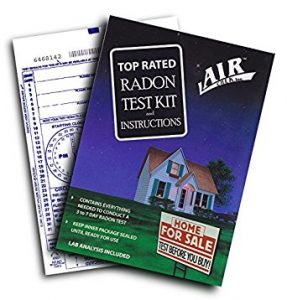
Order a Test Kit
Mid Central Community Action offers Air Chek short-term testing kits for only $10.00 (plus $2 shipping). The price covers the kit and the lab fees. To order a kit by mail, print this RadonKit_Order_Form, fill it out, and mail it with a check for payment.
To buy a kit in person, visit Mid Central Community Action at 1301 West Washington in Bloomington during normal business hours. Kits can also be purchased at the Ecology Action Center at 202 W College Ave in Normal during their hours of operation.
How to Test Your Home
You can’t see or smell radon, but it’s present in every home. By performing a simple test, you can determine if your home has an unsafe amount of radon and whether or not to take action to reduce it.
You can purchase an inexpensive test kit either through the mail or in many hardware stores. Make sure the test kit meets U.S. EPA requirements or is state-certified (check for a label). You can also hire a contractor to test your home. If you are performing a test as part of a real estate transaction, you definitely should hire a state-certified radon tester to perform the test.
Refer to the IEMA Radon Program for a a list of certified test kit manufacturers and laboratories, a list of licensed radon measurement professionals in your area and guidelines about radon and real estate transactions.
Types of Radon Tests
There are two basic types of radon tests: short-term and long-term.
Short-term tests last from two to ninety days depending on the device. Charcoal canisters, alpha track, electret ion chamber, continuous monitors and charcoal liquid scintillation detectors are most commonly used for short-term testing. Because radon levels tend to vary from day to day and season to season, a short-term test is less likely than a long-term test to tell you your year-round average radon level. However, if you need results quickly, a short-term test followed by a second short-term test should provide the information you need to decide whether or not to fix your home.
Long-term tests remain in your home for more than ninety days. Alpha-track and electret detectors are commonly used for this type of testing. A long-term test will provide a measurement that is more likely to tell you your home’s year-round average radon level than a short term test.
How to Use a Test Kit
Follow the instructions that come with your test kit. Place the test kit in the lowest occupiable area of the home such as a basement, family room, living room, den, playroom, bedroom, workshop or exercise room. Do not place the test kit in a kitchen, laundry room, bathroom, crawl spaces, on floor or wall cracks or right next to a sump pump. Place the kit at least 20 inches above the floor in a location where it won’t be disturbed. Keep the kit away from drafts, high heat, high humidity and exterior walls. Leave the kit in place for as long as instructed, but no longer. Once the test is finished, promptly seal, package and send the test kit to the lab specified on the package for study. You should receive your test results within a few weeks.
If you are doing a short-term test that lasts less than one week, you must maintain closed-house conditions twelve hours before activating the test kit through the duration of the test. Closed-house conditions mean keeping all windows closed, keeping doors closed except for normal entry and exit, and not operating fans or other appliances which bring air in from outside (except for fans that are part of a radon reduction system or small exhaust fans that operate for only short periods of time). You may operate home heating or cooling systems during the test, but only operate air conditioning units that recirculate interior air. Also, you should not conduct short-term tests lasting just 2 or 3 days during severe storms or periods of high winds.
Steps for Radon Testing in the Home
Conduct an initial short-term test in each of the lowest structural areas of your home. If your initial short-term test result is:
- below 4 picoCuries per liter (pCi/L), no further action is required. However, you should re-test in two years or upon completing any renovations or additions to the structure.
- between 4 and 8 pCi/L, follow up with another short-term or a long-term test. If the average of the two tests is 4pCi/L or greater, the IEMA Division of Nuclear Safety recommends mitigation to reduce the radon level.
- 8 pCi/L or greater, follow up with another short-term test. If the follow-up result is in agreement with the initial result, the IEMA Division of Nuclear Safety recommends mitigation to reduce the radon level.
An example of radon measurements that are “in agreement” is a result of 11 pCi/L on the first test and 9 pCi/L on the second. An example of measurements not in agreement is 15 pCi/L on the first test and 2 pCi/L on the second. Radon levels do vary from day to day, but rarely by more than a few pCi/L.
Source: IEMA Guidelines for Radon Measurements in the Home




